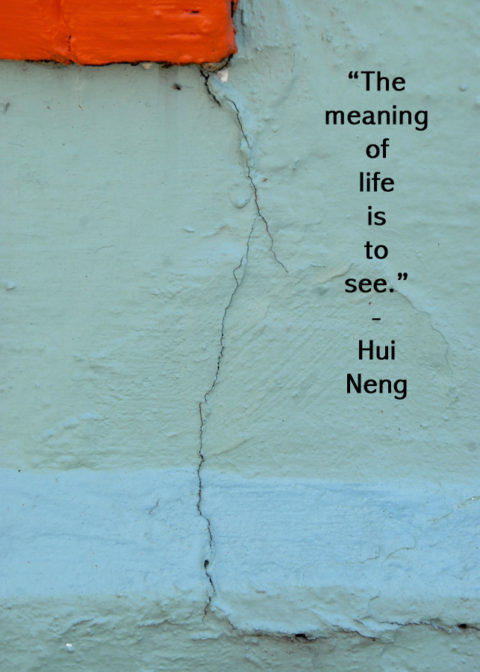 ** Books mentioned have Amazon affiliate links, meaning I make a few cents if you purchase through my link. I only recommend books that I’ve read.
** Books mentioned have Amazon affiliate links, meaning I make a few cents if you purchase through my link. I only recommend books that I’ve read.
As I sit at my computer writing, the screen door is open and I can feel the warmth of the day on my skin. My dog sleeps on the cool hardwood floor. A slight breeze rustles the leaves of the trees outside. There is a hammering sound in the distance from two building projects around the corner. The birds are singing as usual.
Sitting at the computer, I am not separate from all that’s going on around me. We’re all in this together. Maybe the birds can hear me tapping away on the keys.
During a conversation with Parabola Magazine editor, Tracy Cochran, and meditation teacher, Gina Sharpe, called The Beautiful Mind, Cochran says,
“Transformations in the heart and mind (in Buddhism the two are not separate) are not a matter of progressing from point to point. They have to do with stopping, with daring to be still and attentive in the present moment. I began to understand how moments of being present can grow by dedicated practice into moments of presence — moments of realizing that who we are in reality is not an isolated individual on an isolated journey but a being who is an inextricable part of a greater whole. And I learned that the more we are able to open to the present moment, the less we are able to rule out, to judge as unspiritual or unbeautiful.“
That simple act of stopping, daring to be still and attentive, is a practice which can enhance and even transform our experience of life.
Photographer and teacher, Kat Sloma, writes of her daily walk in the forest.
“There is something for me in the forest I can’t explain. There is a communication that lies beneath perception. It is an acceptance of all that I am, almost an absolving of all that I am not. There is no judgement in the forest. It is there whether I am or not, but it welcomes me as part of it, part of a greater system, for a brief time every morning.” ~ Kat Sloma, Beneath Perception
A communication beneath perception. This communication can only be heard when we dim the noise of everyday life. Walking in the forest is one way to do that. Like Kat, I too feel a sense of calm when I go to a place where only the sounds of nature can be heard.
Ellen Langer, a social psychologist from Harvard, spoke with Krista Tippett (On Being) on the value of direct mindfulness in this podcast. Langer has been researching and writing about mindlessness and mindfulness for over 35 years and has found that “mindlessness is pervasive” She gives a simple definition of mindfulness and its benefits.
“Direct mindfulness is when you actively notice new things that puts you in the present; makes you sensitive to context. As you’re noticing new things, it’s engaging. And it turns out, after a lot of research, that we find that it’s literally, not just figuratively, enlivening.”
Photography is one way to practice mindfulness and to notice when we’re mindless.
This is a very different type of photography, one where we don’t look for photographs that others will like. Instead, we practice an open-focused attention to the moment and see what comes to us. Then, we direct our attention to what we’ve noticed and the photograph acknowledges the moment.
What a great post! And, I had a similar mindful experience this morning. I was sitting on the front porch, with my husband, enjoying my coffee, and my senses just all seemed so alive. The coffee tasted good, I could hear the birds singing, the lilacs had a sweet aroma, and I could feel the cool,fresh air of early morning. What a wonderful way to begin the day!
I can just see it, Liz!
I enjoyed this article , Kim. I have often wondered why the state of being in awareness is called ‘mindfulness’, for in meditation and in being totally present in the moment is about emptying the mind of our thoughts and preoccupations. I know I am playing with words here and I have several books on the subject! When I empty my mind of past regrets and fears for the future, my mind is at peace and as Liz says so beautifully above, “my senses just all seem so alive.” Perfect!
Interesting point, Sandra. It does seem paradoxical, doesn’t it? I think of meditation, not as emptying the mind (close to impossible), but of noticing thoughts as they come and letting them go. Social psychologist Ellen Langer speaks of direct mindfulness as simply noticing in a deep and new way, and how enlivening that is.
http://www.onbeing.org/program/ellen-langer-science-of-mindlessness-and-mindfulness/6332